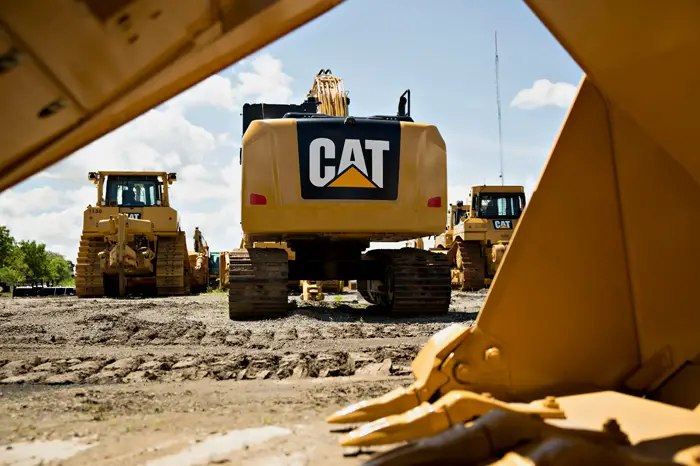
The story of Caterpillar Inc. originates in the late 19th century, when Daniel Best and Benjamin Holt experimented with ways to fulfill the promise that steam tractors held for farming. By 1904, these large steam powered tractors had been plowing California fields for 14 years, and occasionally got bogged down in the soft California soil, especially after heavy rains. These huge tractors were difficult to pull free, even with teams of horses. Benjamin Holt had an idea– why not carry the road with the vehicle? On November 24, 1904 he added wood block-linked treads around the idlers on Holt No.77, his test tractor. The results were impressive, and the modern tractor was born. Caterpillar became famous for its Caterpillar 30 and its Caterpillar 60 tractors.
Caterpillar formed April 15, 1925 with the merger of Holt Manufacturing Company of Stockton, California and the C. L. Best Gas Traction Company of San Leandro, California, forming the Caterpillar Tractor Co. Sales the first year were $13 million. By 1929, sales climbed to $52.8 million, and CAT continued to grow throughout the Depression of the 1930s. The Holt Manufacturing Company had earlier pioneered the use of the caterpillar track during World War I.
After the companies merged, Caterpillar went through many changes, including the adoption of the diesel engine. Caterpillar products found fame with the US Navy “Seabees” who built airfields in the Pacific War. Following World War II, the company grew at a rapid pace and launched its first venture outside the US in 1950, marking the beginning of Caterpillar’s development into a multinational corporation.
Caterpillar products range from track-type tractors to hydraulic excavators, backhoe loaders, motor graders, off-highway trucks, wheel loaders, agricultural tractors, diesel and natural gas engines and gas turbines. They are used in construction, road-building, mining, forestry, energy, transportation and material-handling industries.
Caterpillar’s crawler tractors inspired the first military tanks, which helped end World War I. Many of their machines helped build the Hoover Dam, tunnel under the English Channel, tumble the Berlin Wall and construct cities and neighborhoods across the United States.
Caterpillar was one of the “excellent” companies featured in the 1982 best-selling management book In Search of Excellence by business management guru Tom Peters.

